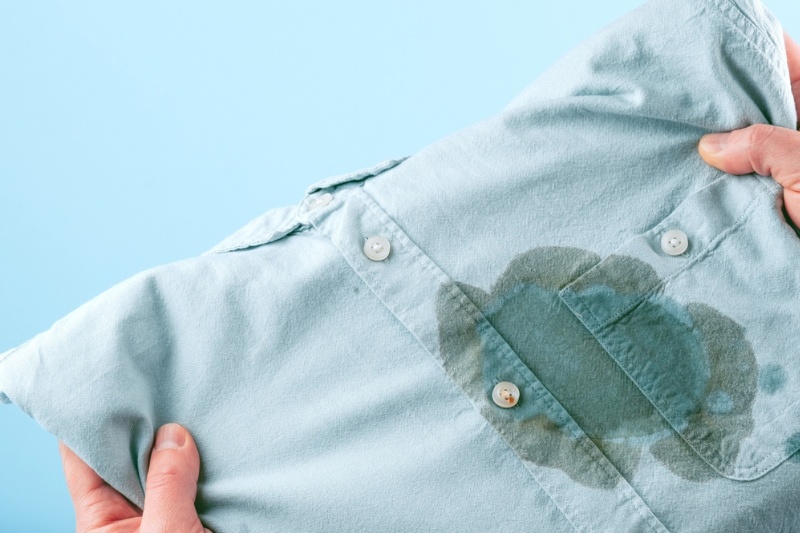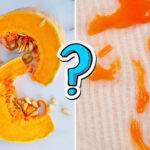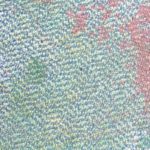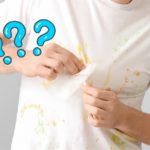Stains can spring up out of nowhere and at any point! And although you make sure you keep your clothes clean, your undies fresh, and carpets toe-snugglingly comfy, you just can’t escape some marks.
The worst blemishes are always the ones that you know nothing about! These are the ones that appear one day, set up home in a really obvious spot, and you have absolutely no idea where they’ve come from.
Unknown set-in stains are annoying, but they can be removed in most cases. You’ve just got to have a little patience and be prepared to put in an extra bit of work to eradicate the mysterious eyesores!
Follow the guide below to rid your item of unidentified stains.
What to Do If You Notice a Stain But Don’t Know What It Is
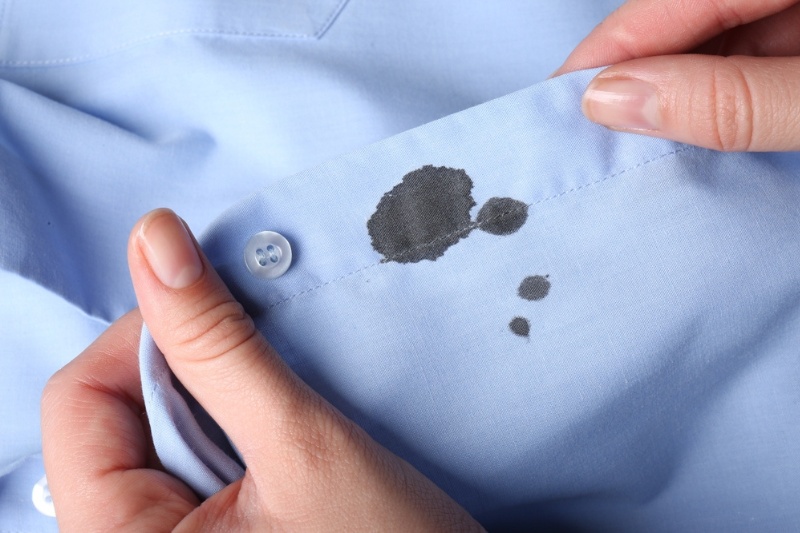
Try to identify the stain
It may seem odd, but the first step to take when treating an unknown stain is to try and figure out what the blemish is.
Believe it or not, there are many ways you can identify a stain so that you can treat it effectively.
But don’t be too disheartened if you can’t work out what the mark is. You can still try to remove it.
Take note of the following:
Look at the stain’s colour
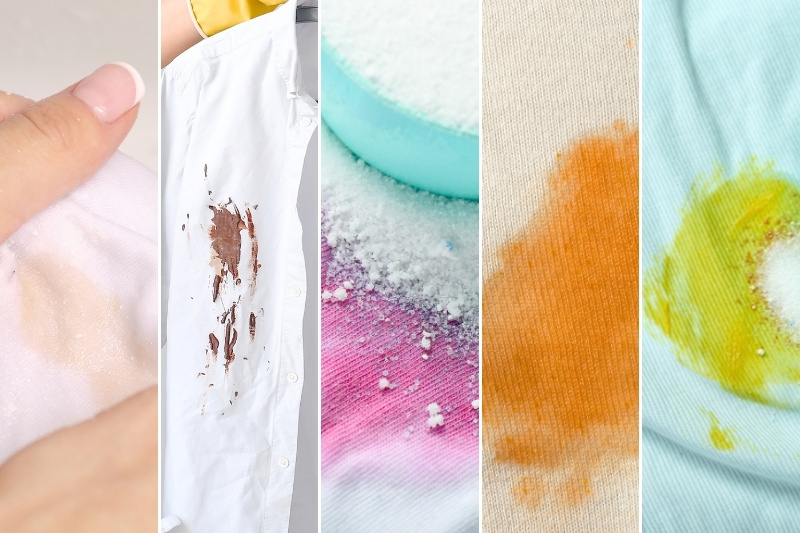
When it comes to stains, you can learn a lot about them based on their colour.
Based on the colour(s) you see, you may be able to remember what made the stain or where you were when the stain happened. Then, you can clean the blemish accordingly.
For example:
- Yellow stains could be a sign of sweat and moisture.
- Orange stains can indicate rust or a sauce (Bolognese/curry).
- Red stains are likely to be blood or wine.
- Brown stains could indicate chocolate, coffee or poop.
- If an otherwise colourful item has some white marks, it could be that the item has been bleached (most likely by mistake).
- Green stains are likely to be grass.
- White marks on clothes after washing may be undissolved detergent.
Assess the location of the stain
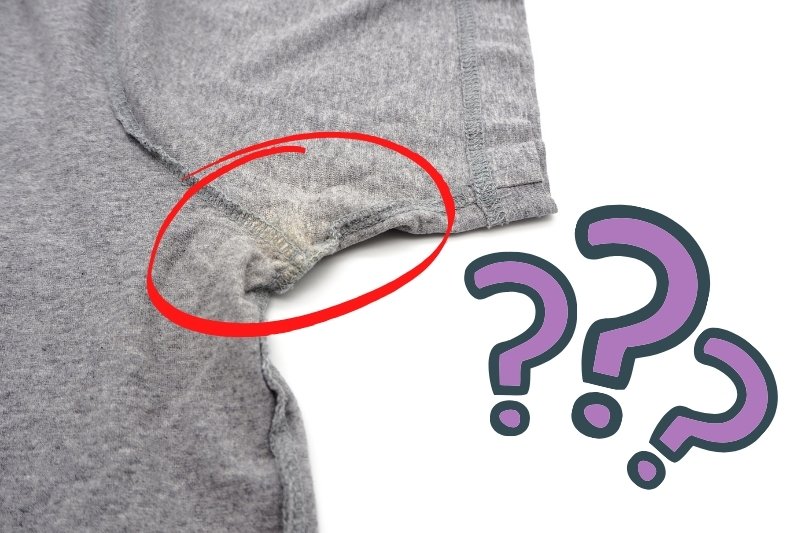
Checking where the stain is may jog your memory so you can figure out what the blemish is.
For example:
- Mud, water, and surface dirt are usually found towards the bottom of clothes (kicked up from the ground when you walk).
- Food and drink are typically found around the front area (chest) or in the lap area (across the thighs) of clothes.
- Yellow, spit/moisture, or oily stains tend to be found on pillowcases.
- Armpits and collars tend to be riddled with sweat marks.
- Your dog may also pee in the same location on the carpet.
Smell the stained area
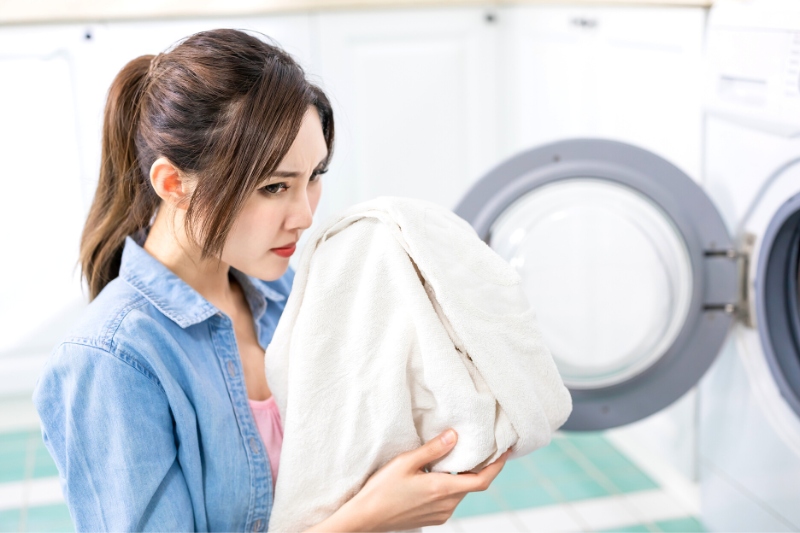
Not all stains will hold their odour, but some potent blemishes will. By smelling the blemish, you may work out straight away what it is.
For example:
- Poop smells (human and cat/canine kind).
- Urine smells.
- Certain foods and drinks like coffee leave an aroma.
- Grease and oil also have an odour.
- Fruity and sweet aromas could be dessert-related (ice cream).
Feel the stain
It’s also possible to feel a stain and to gauge what it may be. It’s a little less common but still worth checking out.
For example:
- Candle wax is more textured, raised, and firm.
- Vomit can feel crusty and stiff.
- Liquid stains will have sunk into the material, and the fabric may feel quite soft.
Consider what the item may have gone through or who’s worn the garment
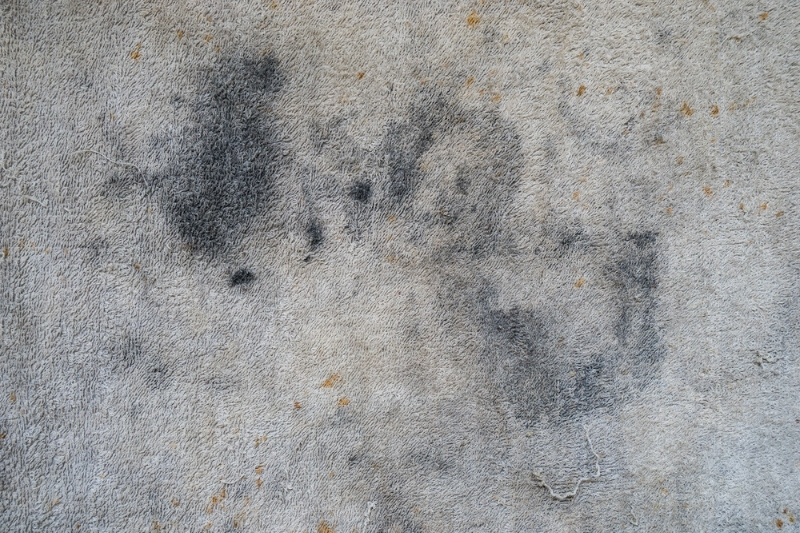
Take a few minutes to think about where the item of clothing/furniture may have been and who’s had contact with it. From here, you can pin down what the stain may be.
For example:
- Who owns the stained garment? Is it a baby, child, or adult? From here, you can deduce what the person may have poured/dropped/wiped onto the garment. For example, a baby isn’t likely to come into contact with the same things as an adult. So, you can narrow the cause of the stain down considerably.
- What has the item come into contact with recently? If your carpet is stained, it may be because the decorator dropped some paint onto the floor and didn’t notice. A blob of something akin to foundation on the carpet near the vanity unit – it’s foundation! The washing process can leave stains on laundry – this is caused by undissolved detergent, misuse of fabric softener, or overloading the washer’s drum.
- Work clothes will also be tainted with specific blemishes, these include:
- A mechanic’s clothes will be full of oil and grease.
- A nurse’s uniform may be smeared with blood or vomit.
- A teacher’s work clothes may be covered in felt pen/ink/chalk.
- A painter and decorator’s attire will be covered in emulsion/gloss.
It’s not a perfect science by any means. But hopefully, by assessing your items with the above in mind, you might be a little closer to working out what your stain is. Then, you can treat it accordingly.
How to Remove Unknown Set-In Stains
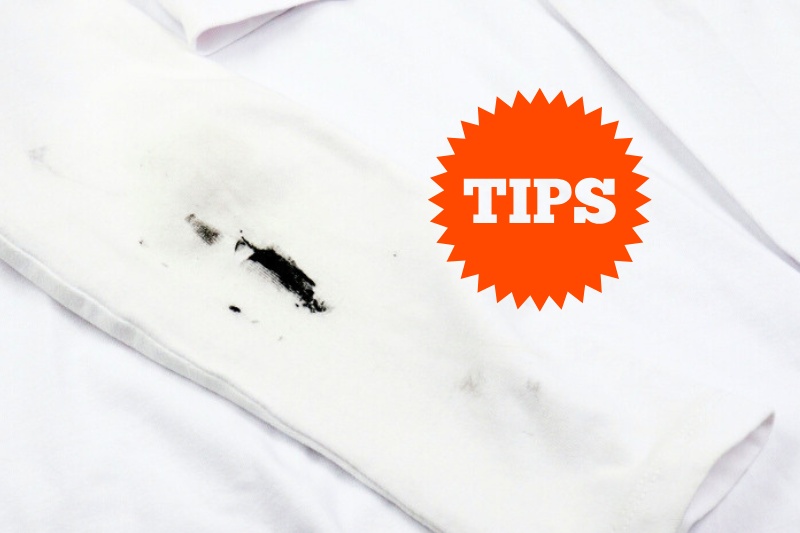
Tips to think about
- Be gentle. No matter what stain you’re dealing with, you must always treat the blemish carefully!
- No scrubbing. If you scrub the stain, you’ll drive it deeper into the material’s fibres. Consequently, it’ll be even trickier to remove.
- When removing a stain, work from the outside of the blemish towards its centre (that’ll stop you from spreading the mess around).
- Even when the going gets tough, keep plodding on with the treatment. You may have to repeat treatments and use different ones, but you should be able to dull the appearance of the stain if you cannot completely remove it!
- Read the care label on the item to see how to care for it. For example, don’t assume that every item of clothing can be washed in a washing machine. Some things have to be washed by hand. And other items can only be cleaned by hand because they cannot fit inside a washing appliance. On that note, if you see ‘Dry Clean Only’, this is how you should clean the item.
- Always do a patch test. Some of the products noted below will damage or discolour colourful items.
- Try to act as fast as possible when removing stains – spot and remove the blemish! The more time a stain has to age and harden, the more difficult it becomes to remove.
- Don’t let the area dry until you’ve dealt with the stain. Dried blemishes are hard to remove. So, if you can, avoid drying your clothing/carpet until you’ve dealt with the unknown stain.
Dab/blot the stain with a damp, neutral-coloured cloth
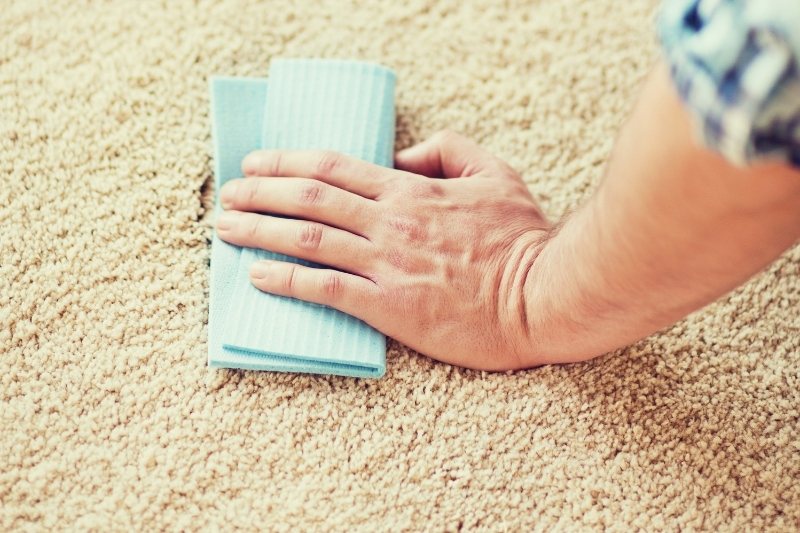
It doesn’t matter if you’ve got a stained blanket, dress, or carpet, the first step is to blot the area with a damp neutral-coloured cloth to see what happens.
As you blot, you may notice that the stain lifts away from the surface and attaches itself to your cloth. If so, you should continue blotting the area to remove as much of the stain as possible.
When left with a faint trace, you can use another method on this list to eradicate the rest of the mark.
If nothing happens, assume that the blemish is old and choose an alternative treatment from this list to take out the stain.
Run cold water through the back of the stain
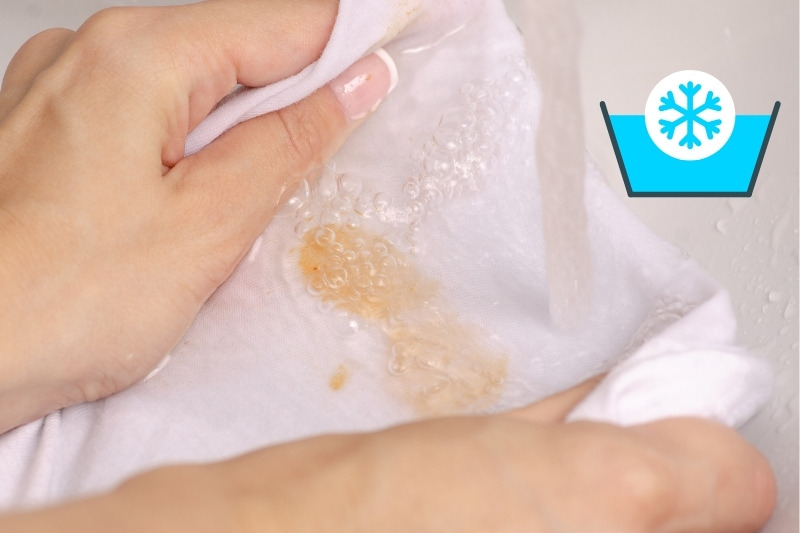
To push out stains on clothes, you could turn the item inside out and hold the garment under the cold water tap.
As you hold the piece under the tap, the cold water will push the stain out of the front of the material.
You can then pre-treat the piece (using detergent or an off-the-shelf stain remover) and launder it as usual.
Use a mild laundry detergent or washing-up liquid to treat the mark
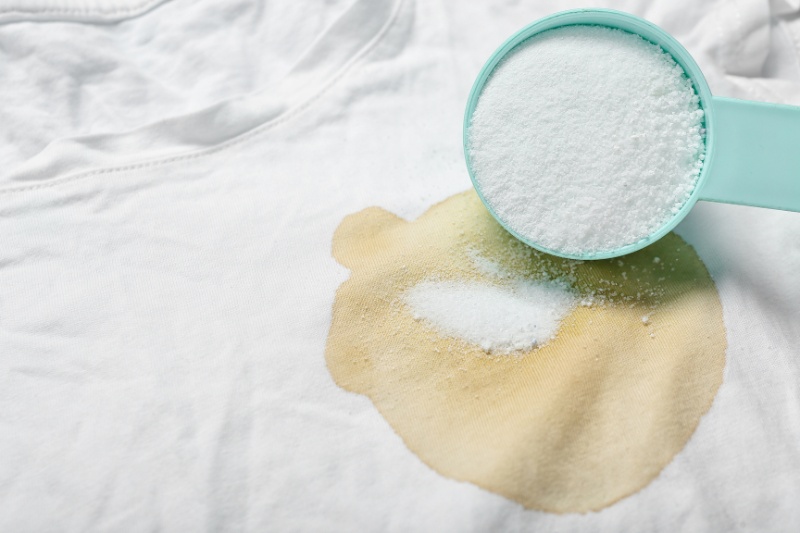
As mentioned above, you could pre-treat an item of clothing with liquid laundry detergent before washing it. This may break down any bonds the stain has with the fabric.
For harder stains, you should use a biological detergent to break down the dirt and proteins.
The enzymes in bio detergents can break through different blemishes, from everyday grime to oils, so it’s the ideal cleaner to use if you’re not sure what type of stain you’re dealing with.
Hard surfaces, like floors, can be cleaned using washing-up liquid and water. Just make sure your mop is damp and isn’t soaking wet. And allow plenty of fresh air into the room so the surface dries quickly!
General washing and laundering
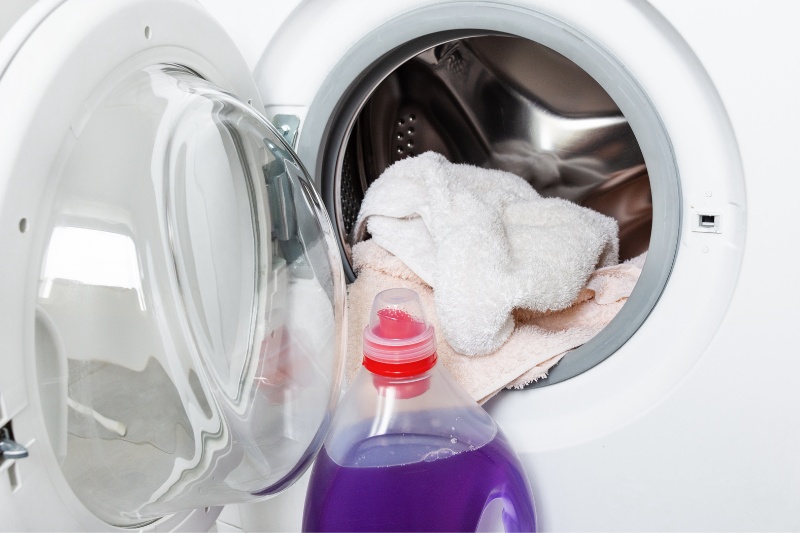
Sometimes, you may be lucky and can wash an unknown stain right off an item by running it through a regular washing cycle.
Of course, this isn’t likely to work on aged stains. But if you’ve caught the mysterious stain in its infancy, a little soap and water could take the blemish off your item.
As noted above, if you try this, use a biological detergent, like Persil’s Bio Liquid Laundry Detergent, packed with enzymes that can smash through the blemish.
Tip: Persil’s detergent is very effective at removing chocolate ice cream and grass-related stains.
Take the natural approach
If you’re unsure about your stain, try removing it using a natural and less chemical-ridden approach before you drop heavy-duty solutions onto the mark.
Note: You must do a patch test!
White vinegar
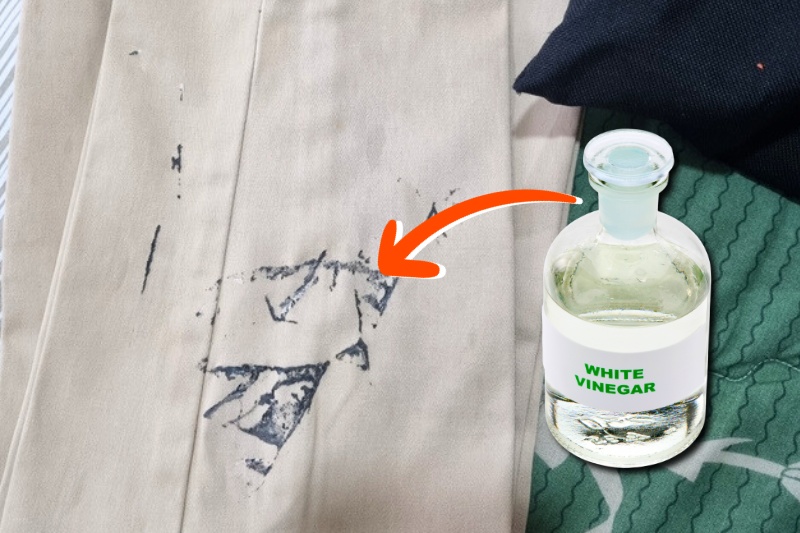
White vinegar is a colourless acidic liquid that can be used on various surfaces, including carpets, clothes, and upholstery.
Due to its acidic nature, it can cut through grease, grime, and mineral deposits, and it can be used alongside other products like bicarbonate of soda and rubbing alcohol (not bleach!).
You can use white vinegar to treat stains in different ways. For example, you could dilute one part vinegar in three parts water to create a sprayable solution, or you could make a paste of cornstarch and vinegar to take out blemishes on carpets.
You can buy white vinegar from various shops (including online and offline). It is, however, better to use white vinegar for cleaning because it won’t stain fabrics like another vinegar would (red wine vinegar or balsamic, for example).
Bicarbonate of soda
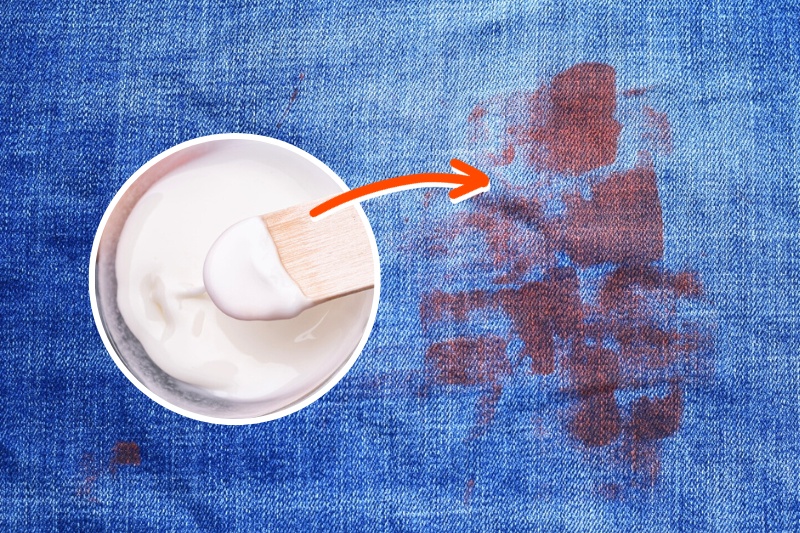
Bicarbonate of soda is another popular household goodie that is great at ripping through grime and removing odours.
It can be mixed with water to create a cleaning paste and can be applied to various surfaces to break down stains. This includes carpets, upholstery, clothes, and even ovens.
Although bicarb is a mild abrasive, it won’t cause too much harm to most household surfaces.
Lemon juice
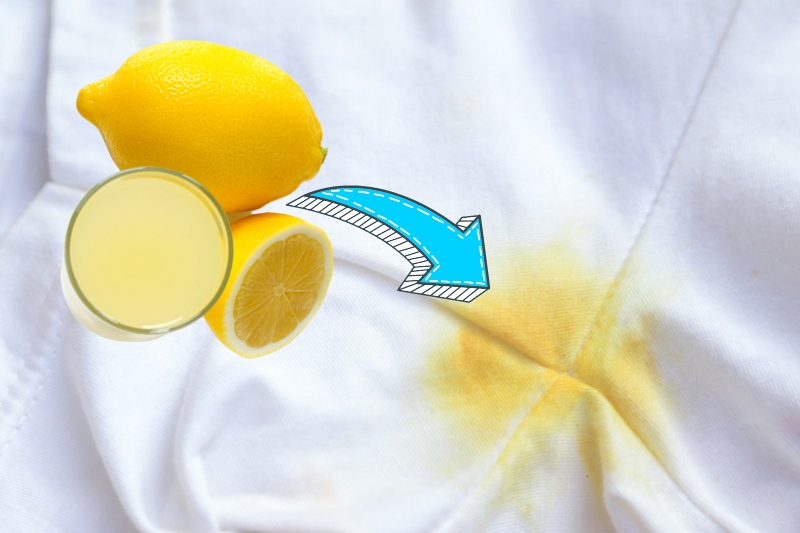
Similarly, lemon juice can be used to clean unknown stains from surfaces. Just be careful when using lemon juice, as it can have a bleaching effect on some items. So, use it with caution.
You can remove grease and organic stains with lemon juice. Lemon juice can also re-whiten dulling white laundry.
Try a stronger approach: Use chemicals
Solvents and liquids
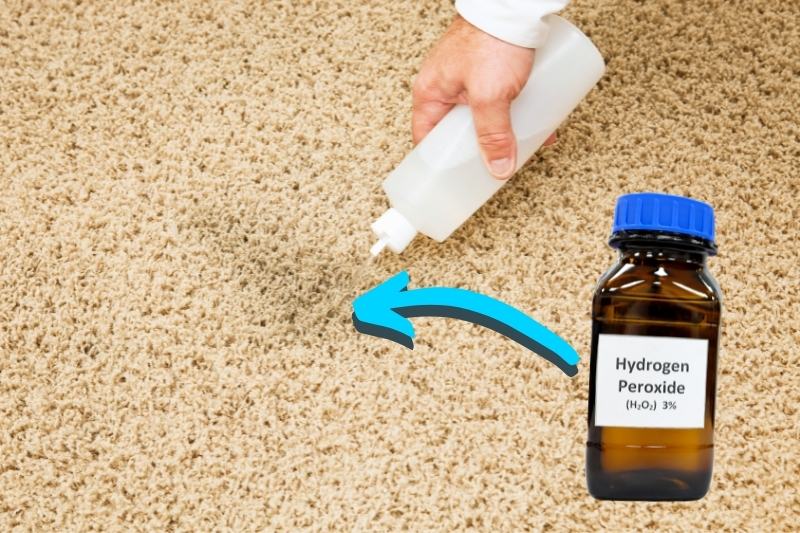
If you’re after a stronger cleaner, you can turn to chemical-based solutions. These include hairspray (with a high alcohol content), acetone, rubbing alcohol, and hydrogen peroxide.
These quick-drying chemicals are ideal for removing paint, nail varnish, ink, and permanent marker stains, as well as tackling tough and aged marks.
To use one of these products, you should clean/scrape away as much of the stain as possible, coat the stain in one of the chemicals listed above, and then blot the blemish.
You should keep in mind that these chemicals might discolour colourful surfaces. So, do a patch test before you start treating the area.
Ammonia
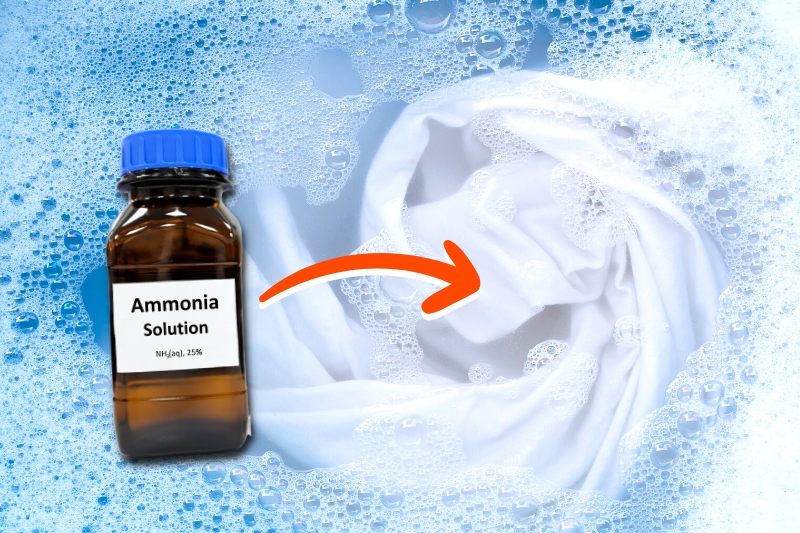
In addition, you can use ammonia to remove stains. Ammonia can be used in spray form (mix with water in a spray bottle), clothes can be soaked in the solution, and for extra cleaning power, half a cup of it can be added to the washing machine when running a cleaning cycle.
Ammonia is good at removing ice cream stains from carpets, brightening white clothes, and eradicating mildew marks.
Dry cleaning kit
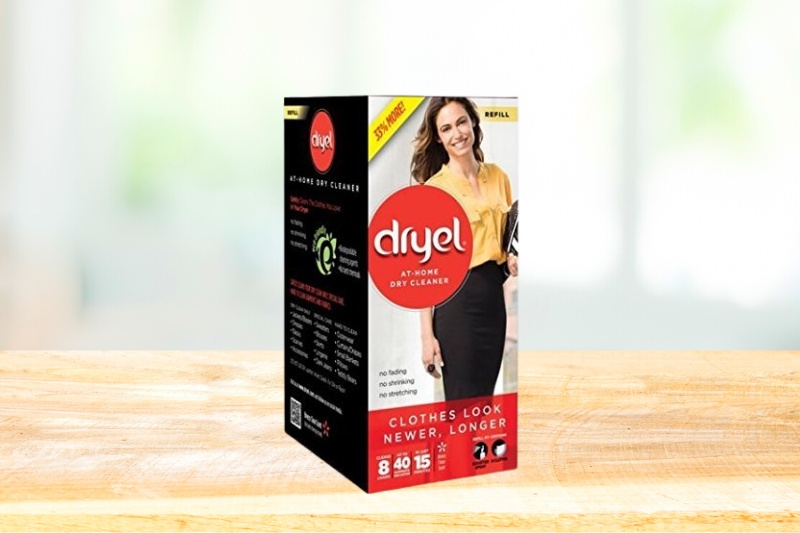
Dry cleaning solvents such as Dryel can also be used, but when treating ‘Dry Clean Only’ garments, it may be worth taking them to a dry cleaner instead.
Bleach
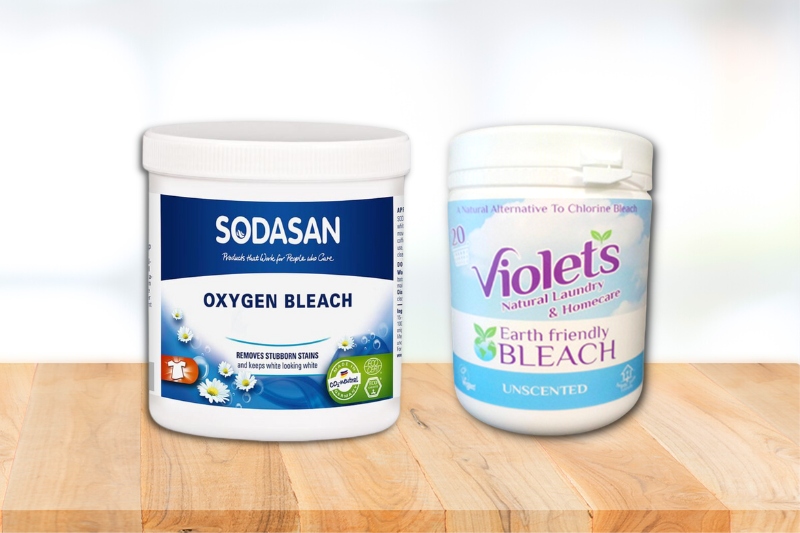
One of the strongest cleaners you can use is bleach. However, bleach may permanently damage or discolour your items, so use it with caution.
Also, not all clothes/surfaces can be treated with bleach, so check this out before you try this method (read the care tag).
If you plan on using bleach, use oxygen bleach, as this is the mildest form of bleach. It can also be used on colourfast clothing.
Chlorine bleach, in contrast, is harsh and will discolour colourful laundry and weaken delicate materials. (Ideally, this type of bleach must only be used on white clothes).
Always make sure that you dilute a small amount of bleach in water before you use it, and don’t soak clothes in bleach for too long (even if they’re white!).
Enzymatic cleaner
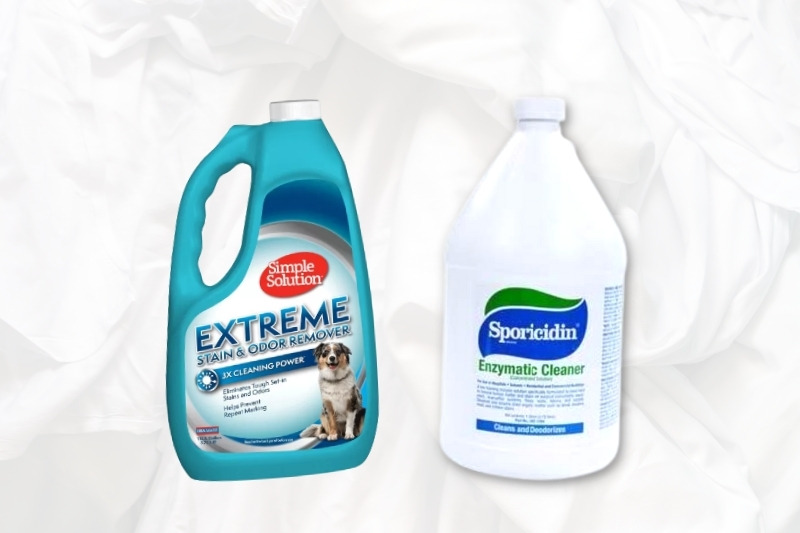
If you believe your unknown stain may be protein-rich, like urine or faeces, you must thoroughly clean the area and then treat it with an enzymatic cleaner.
If you don’t use an enzyme cleaner to treat the surface, the proteins will remain on the surface. In turn, your pet will repeatedly go back and wee (’mark’) in the same spot. Also, the smell of the stain will linger for longer than necessary!
Tip: Enzymatic cleaners can also be used on other stains, including blood, vomit, milk, and sweat.
Use an off-the-shelf stain remover
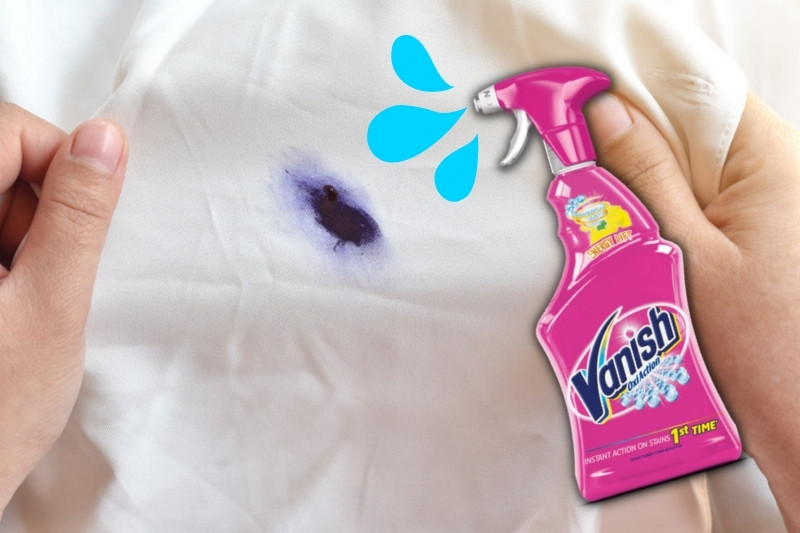
If none of the above methods tickle your fancy, you could purchase a stain remover.
In general, stain removers get mixed results. Some people think they’re great and work first time. Others disagree and prefer to use a DIY approach to treat blemishes.
Given the fact that you don’t know for definite what stain you’re dealing with or how old it is, you may be jumping down a rabbit hole by buying a specialised stain remover because you don’t know if it will work or not.
There’s a chance that if you buy an all-around stain remover, the blemish may completely disappear or, at the very least, fade.
But there’s also a chance that you could purchase an ineffective cleaner that has no effect on your stain. In this case, you could waste money trying different products in the hope that one of them works.
Try to whittle down what you think your stain is by using the suggestions above. Then, pick a suitable stain remover based on the material you need to clean and what you think the stain is (your best guess).
Ask a pro
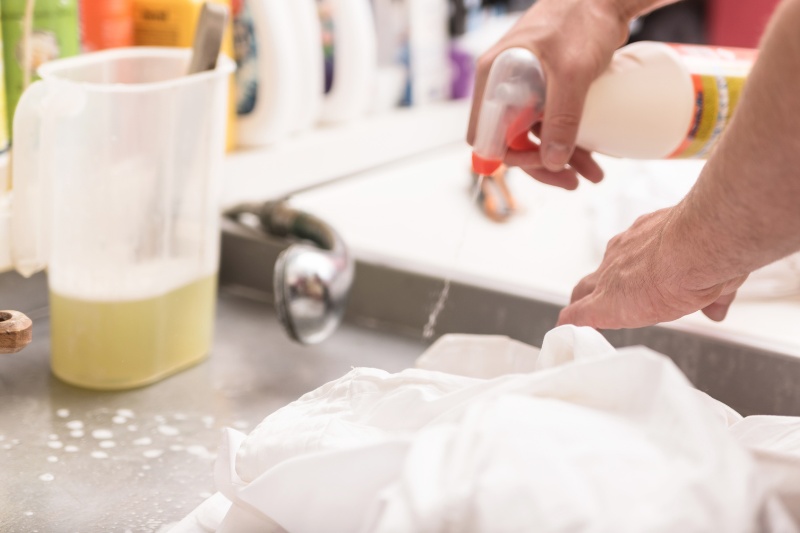
Of course, you can always take your stained item to a specialist to get their take on what the unknown blemish could be. They may even be able to remove it for you.
You can find a suitable professional near you by doing an online search – choose a specialist with extensive experience and a good reputation.
Don’t forget to ask plenty of questions when you speak to them, get a quote for the work, and ensure you understand what the job entails (so there’s no surprise for you at the end!).
Tip: If your unknown stain is on a piece of upholstery or vintage/antique piece, it would be worth getting a specialist’s opinion before treating it.
Are Stains Permanent Once Dried?

Yes, and no!
After drying, a stain will have dried into the material and created a stronger bond with the fibres.
In turn, it will be more challenging to remove, and sometimes no amount of solution will eradicate the blemish. So, the garment may end up permanently stained.
However, this is not necessarily the case with all items. You may be able to rescue some garments.
To remove a dried-in stain, you must use a strong cleaning solution and dedicate more time to removing the mark from the item.
With a bit of patience and elbow grease, the blemish may come off. Or, at the very least, dull in appearance, so it’s not so obvious.
When cleaning laundry, you should:
- Check your laundry before washing it.
- Empty pockets and do up zips.
- Treat stains accordingly.
- Wash your items.
- Check your items again for stains (when wet).
- Re-treat items, if necessary.
- Dry your laundry when you know for sure that there are no stains present.

Bethan has a passion for exploring, reading, cooking and gardening! When she’s not creating culinary delights for her family, she’s concocting potions to keep her house clean!
